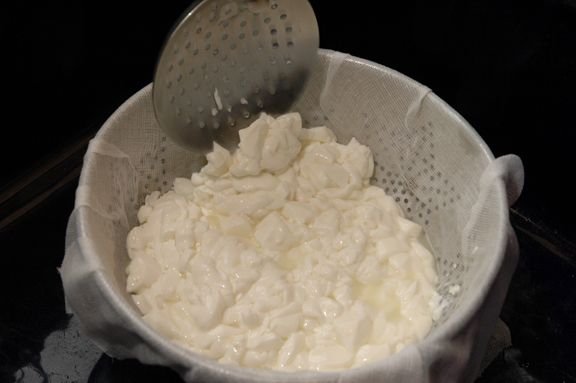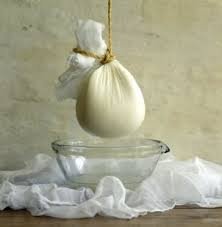Making cheese is an Art. What if you only had Milk, can it still be done. You bet. Follow me and see just how. Great on Crackers.
If you were in a situation that you could no longer go out to a store and purchase all the technical stuff in making cheese, learning to make this wonderful treat, will go a long way in preparing your meals.
It's a totally a different taste and outcome with each different type of Milk you chose to use. I personally like to use 2% Milk. Using fresh, whole milk from grass-fed cows (from a nearby farm) will produce the best results, but that is just not readily available to everyone. Low-fat milk also can be used to make cheese, but you’ll get less cheese as a result. Store-bought milk will work, too. Just be sure to avoid any brands that say “ultra-pasteurized". There are two kinds of powdered milk – nonfat and whole. Both may be used in cheese making. However, I recommend using the whole dry milk only in yogurt and the soft cheeses. (If you use it for aged cheese, it may taste rancid.) Did you know that you can also use Powdered milk to make Cheese. Whole dry milk has a shelf life of 6 months. Once opened, nonfat dry milk has a shelf life of one year at room temperature. You may extend this shelf life by keeping your dry milk in the refrigerator or freezer. Now enough about Milks.
When Making Cheese It’s best to use filtered water, as some water supplies contain compounds that compromise milk’s ability to be made into cheese.
OK Now on to Making the cheese.

To start you pour 1 gallon of Milk into a stainless steele Pot. Allow Milk to "Cure" at room temperature. Curing the milk, just let it set for 24 hours. Some milks need more time some need less time. When it is done curing, the milk separates from the water, and it should look like curds floating in a big blob, lol. Next lets warm it up. Looking for a lukewarm temperature. Now take the curds and place them in the cheesecloth and let it hang for approximately 4 hours, depending on how soft or hard you like your cheese and how fine your cheesecloth is. If you would like it spreadable 5 hours is sufficient.

Store in the fridge for approximately 2 weeks.
Now you can enjoy a homemade cheese strudle, or crepes with cheese and cinnamon, or just add to your favorite Pasta. The sky is the limit.
Here is another recipe for cheese using simple things that are found in the Kitchen.
1 gallon milk, not ultrapasteurized
½ cup white vinegar
2 teaspoons very fine sea salt
Line a colander with a double layer of cheesecloth or a single layer of butter muslin (find it here).
Pour the milk into a large, heavy-bottomed kettle, and bring it to a boil over medium heat. Stir it frequently to keep the milk from scorching. When it comes to a boil, immediately reduce the heat to low, and stir in the vinegar. The milk should immediately separate into curds and whey. If it does not separate, add a bit more vinegar one tablespoon at a time until you see the milk solids coagulate into curds swimming within the thin greenish blue whey.
Pour the curds and whey into the lined colander. Rinse them gently with cool water, and sprinkle the curds with salt. Tie up the cheesecloth, and press it a bit with your hands to remove excess whey. Let the cheesecloth hang for 1 to 2 hours, then open it up and chop it coarsely. Store in the fridge for up to a week.
Sources:
http://nourishedkitchen.com/farm-cheese-recipe/
http://www.buildanark.net/index.php?pages/Making%2520Halloumi%2520and%2520Anari%2520Cheese.html
https://knowledgeweighsnothing.com/how-to-make-farmers-cheese/
